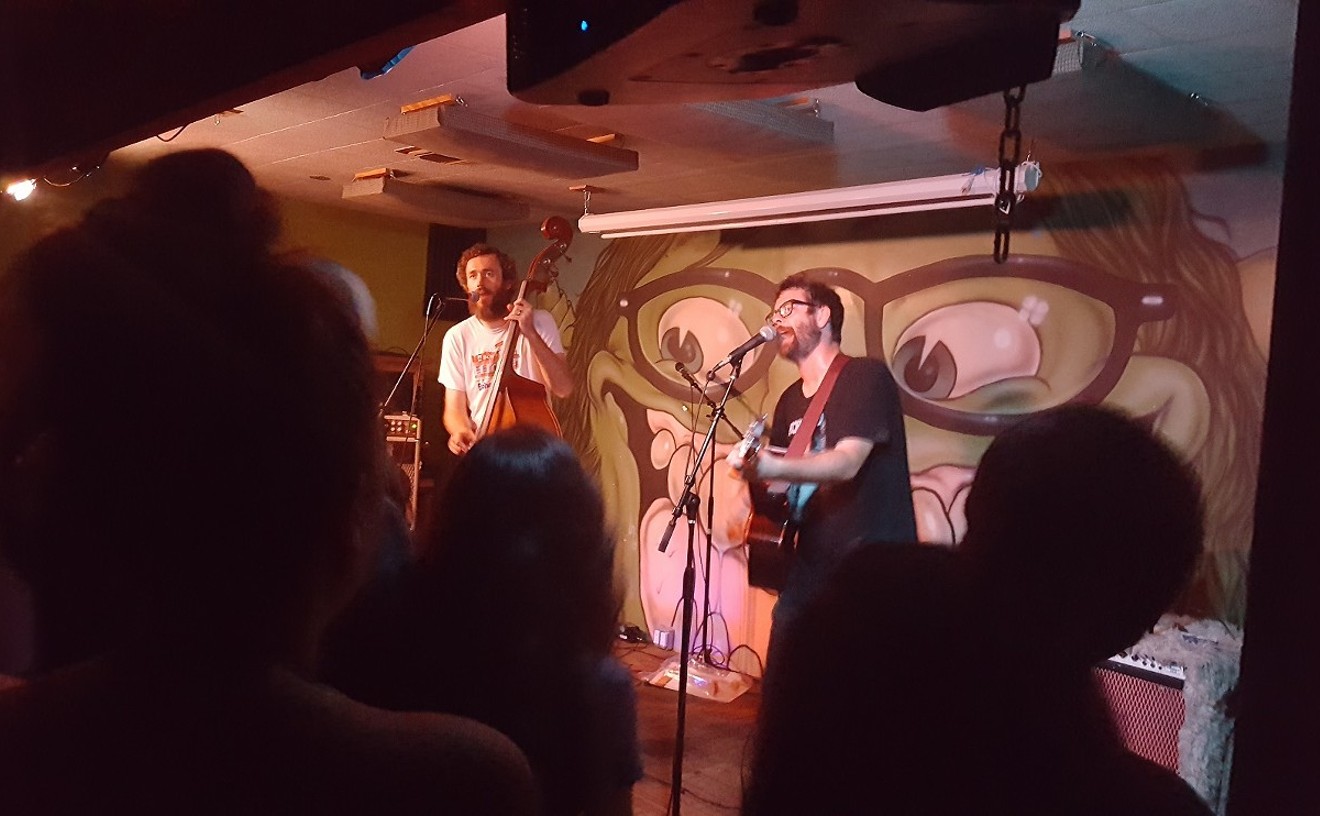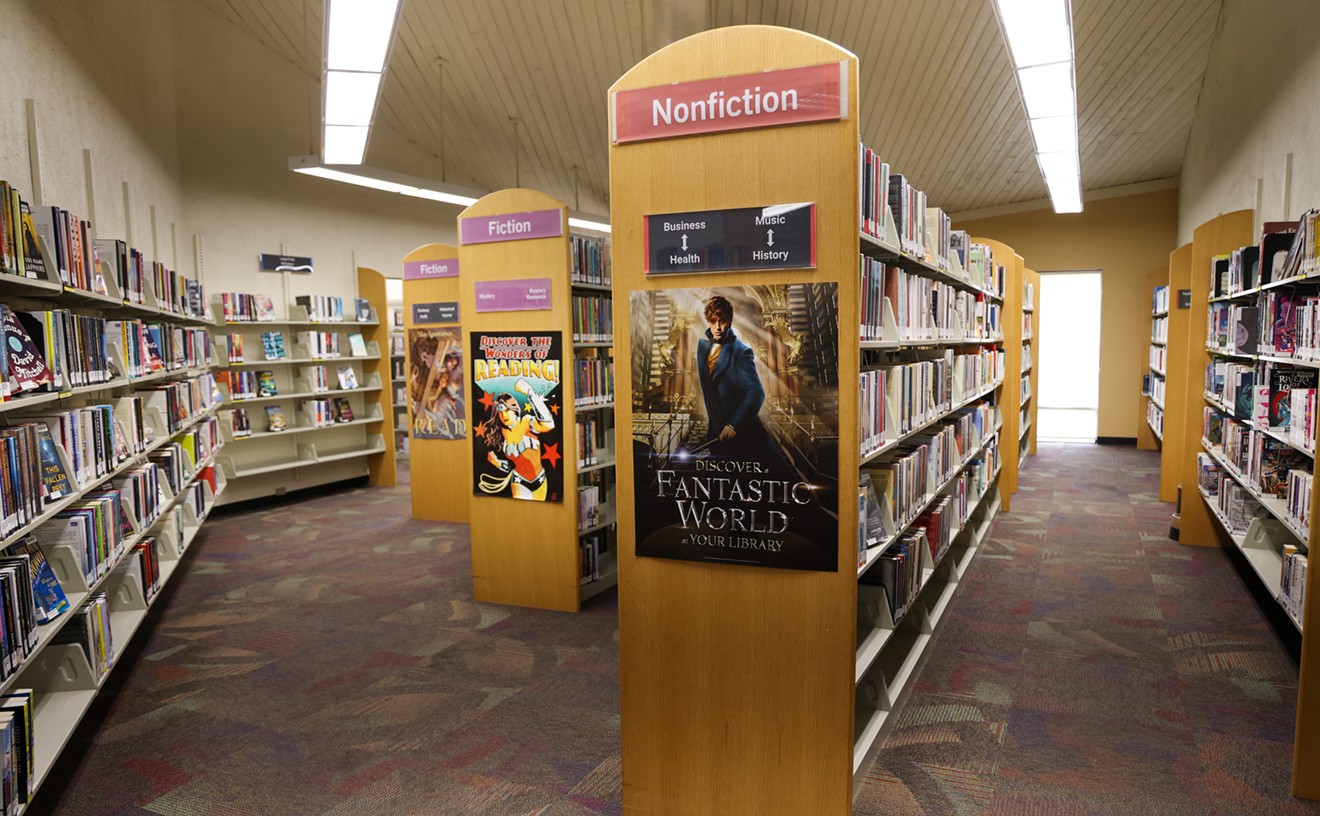These subtleties aren't lost on audiences who've recently seen the stage adaptation of Welles' radio show. "Even though we haven't changed the script, audiences are focused on equating the tragedy in our script with the recent tragedies here," says Darron L West, co-director of the Saratoga International Theater Institute production, which opens in Scottsdale next week. "We're reading the same lines as before, but they're lines about smoke billowing down Manhattan streets and buildings crumbling under an attack. People are going there on their own."
CBS radio first aired The Mercury Theatre on the Air's War of the Worlds on October 30, 1938, as a Halloween prank. But listeners who tuned in late and missed the program's introduction mistook its simulated news bulletins -- which interrupted a fictional dance music show -- for reality. Nearly two million people stampeded local police stations and hospitals, and scores of adults required treatment for hysteria.
Coming so close after the recent war scare in Europe, and at a time when radio broadcasts were routinely interrupted with reports of dramatic real-life tragedies (like the eyewitness description of the explosion of the Hindenburg 18 months earlier), it's no wonder Americans went to pieces. It didn't hurt that Welles had set the story in present-day America and used names of actual New York and New Jersey towns, streets and buildings in describing the Martian attacks.
Director Tom Leveen, whose adaptation of the SITI War of the Worlds is now playing, chose the play several months before the recent terrorist attacks. He was drawn to the piece because of its cautionary theme, its message of "keeping your eyes open, because the world can come crashing down." Leveen thought about canceling the show after the attacks, but instead added special material that includes an archival radio clip about the bombing of Pearl Harbor and a curtain call salute to the Stars and Stripes.
The bit with the flag originated because Leveen wanted to comment on the recent tragedies without, as he puts it, "beating anyone over the head, or using it to sell tickets. But I wanted to seal it up with something patriotic."
The road company production of War of the Worlds, which opens only days after Leveen's closes, contains no special material. The parallels between Welles' adaptation and recent events are all implied, according to West.
It may be suddenly more topical, but War of the Worlds is only slightly entertaining as a stage play. The locale -- the recording studio from which the program was broadcast -- makes for ho-hum staging. There's a lot of pacing back and forth between microphones by the players and, while both productions have dressed things up with lighting tricks and smoke machines, there's little that's compelling about watching a radio drama read.
The mythology of War of the Worlds -- none of which is covered in its staged reading -- is much more engaging. The inflated newspaper reports of the panic were mostly discredited in the months following the broadcast, but the stories of the suicides, miscarriages, heart attacks and stampedes it induced have become American folklore. A 1966 study of the broadcast by radio historian Hadley Cantril concluded that only about 20 percent of listeners were frightened by the program, a figure inflated by wags who derided the gullibility of the American public in the weeks after the program aired. The press reportedly exaggerated the nation's reaction to the broadcast as a way to undermine radio, with which it competed for news coverage. Perhaps the biggest impact of the broadcast came from the Federal Communications Commission, which, after the Welles debacle, issued regulations prohibiting the use of fictional formats that masquerade as news.
"The American media lost its virginity to War of the Worlds," West says. "And we lost the last of our innocence on September 11. That's the real relationship between the two events."










